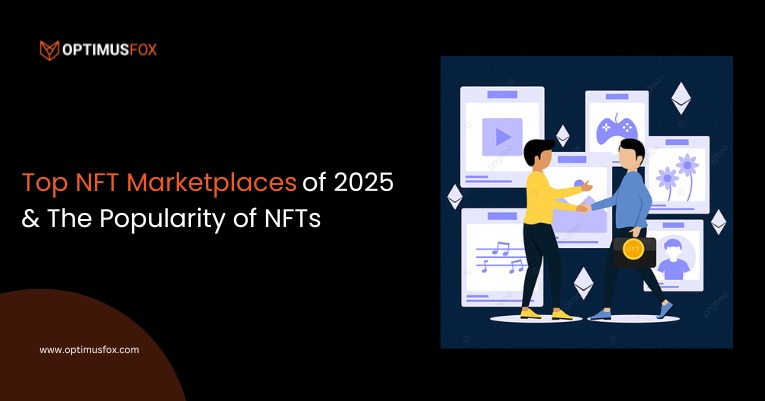Decentralized exchanges allow users to buy and sell cryptocurrencies through peer-to-peer transactions eradicating intermediaries. In other words, it is a departure from traditional exchanges where a third party holds the authority to transfer assets between two parties.
DEXs were created to remove the requirement for any authority to oversee and authorize trades performed within a specific exchange. Decentralized exchanges allow for peer-to-peer (P2P) trading of cryptocurrencies. These peer-to-peer exchanges are usually non-custodial, which means users keep control of their wallet’s private keys. With a decentralized exchange, a distributed ledger Blockchain replaces the third party and eliminates system failures. So, users have control over their assets which makes trading more transparent. DEXs use blockchain smart contracts to automate transaction operations, but there are various variations for order fulfillment.
How does DEX work?
Every trade involves a trading cost in addition to a transaction fee because decentralized exchanges are constructed on top of blockchain networks that support smart contracts and allow users to maintain custody of their cash. To use DEXs, traders essentially communicate with smart contracts on the blockchain.
Automated market makers, order books DEXs, and DEX aggregators are the three primary categories of decentralized exchanges. Through their smart contracts, all of them enable users to transact directly with one another. Order books identical to those used by centralized exchanges were utilized by the first decentralized exchanges.
Order Book DEXs:
Order books keep track of all open purchases and sell orders for certain asset pairs. Sell orders show that a trader is prepared to ask for a specific price to sell an asset, whereas buy orders show that a trader is keen to purchase or bid for an asset at that price. The size of the order book and the market price on the exchange is determined by the difference between these prices.
Order book DEXs are categorized into two types: on-chain order books and off-chain order books.
On-Chain Order Books:
For these types of exchanges, every process takes place on a chain, including order modification and cancellation. It is the most decentralized process as a third party has no right to handle and execute the transactions. However, it is not a practical approach to execute as placing information on all the nodes may take more time.
Many blockchain experts criticize this model because of an existing problem of the on-chain order book system in DEXs – front-running. By using relaters to store the orders on centralized servers, an on-chain order book lacks censorship resistance in contrast to an off-chain order book. Users must construct and submit a transaction in this system in order to place limit orders or cancel ones that are already in place. As the transactions in blockchain storage can be revealed to miners even though they are not part of the block, this step poses a risk to users.
Off-Chain Order Books:
Exchanges with off-chain order books are decentralized to some extent, a bit more centralized as compared to on-chain ones. Despite storing data on the blockchain, off-chain orders are pushed to the centralized entity that controls the order book. Some of the ERC-20 Ethereum-based tokens offer DEXs that follow the same working principle, and to achieve decentralization smart contracts are integrated.
Automated Market Makers:
An Automated Market Marker uses unique algorithms that make pricing pairs in real-time. Unlike the traditional market, where firms offer an accurate price and stick to that, AMM decentralizes these operations and empowers users to build a market on the blockchain. Instead of making direct transactions, users trade through smart contracts and offer liquidity. Unfortunately, due to automatic price algorithms, there are no order types in AMM.
DEX Aggregator:
Protecting users from the pricing effect and decreasing the likelihood of failed transactions are two other significant goals of DEX aggregators. DEX aggregators use several different protocols and mechanisms to solve problems associated with liquidity. These platforms essentially aggregate liquidity from several DEXs to minimize slippage on large orders, optimize swap fees and token prices and offer traders the best price possible in the shortest possible time.
Read for more: Blockchain in Automotive Industry
Pros of Decentralized Exchanges:
There are many reasons decentralized exchanges have got popularity among crypto enthusiasts. Some of them are:
No KYC Required
DEXs preserve user-sensitive information, funds and offer top-notch privacy. Users can have access to decentralized exchange without creating an account or undergoing identity verification.
No Counterparty Risk
As users do not need to transfer their assets to the exchange, the number of risks associated with theft and fraud reduces. Moreover, DEXs prevent price manipulation, and fake trading volume and users maintain anonymity due to a lack of KYC.
Versatility of Token
In the past, it was difficult for users to trade new cryptocurrencies. Now, DEXs have made it effortless for users to trade even obscure currencies. Typically, traditional exchanges offer limited options that restrict the user from several countries to participate.
Cons of Decentralized Exchanges:
No doubt, decentralized exchanges offer groundbreaking benefits, but they also have some drawbacks:
Limited Trading Functionalities
Mostly DEXs execute simple operations like buying and selling. As a result, users cannot find advanced options like stop loss and margin trading which makes trading difficult.
Scalability Issues
DEXs are also undergoing the same congestion as Ethereum’s first network iteration. Though a transformative network upgrade in 2018, DEXs are still subjected to network first layer scalability.
Liquidity risk
Even while DEXs are growing more and more popular, certain DEX marketplaces have inadequate liquidity, which causes significant slippage and a bad user experience. Significant sections of trading activity are still undertaken on centralized exchanges, which frequently results in reduced liquidity on DEX trading pairs because of the network effects of liquidity, which work as follows: high liquidity draws more liquidity, and low liquidity attracts less liquidity.
Network risk
Using a DEX may be excessively expensive or completely impossible if the network experiences congestion or downtime because the exchange of assets is made possible by a blockchain, making DEX users vulnerable to market fluctuations.
Token risk
Given that anyone can develop a market for any token on multiple DEXs, there is a higher chance of purchasing subpar or malicious tokens than in centralized exchanges. DEX users need to consider the risks associated with participating in early-stage projects.
Conclusion:
Decentralized exchanges are a trusted and secured solution that authorizes users to trade cryptocurrencies eradicating third-party dependencies. As full decentralization is still a debate, multiple DEXs offer varying levels of security, efficiency, and privacy from which investors can choose. As DEXs are evolving continuously, they will become more practical, and user adoption will be a focus point DEXs look at.





